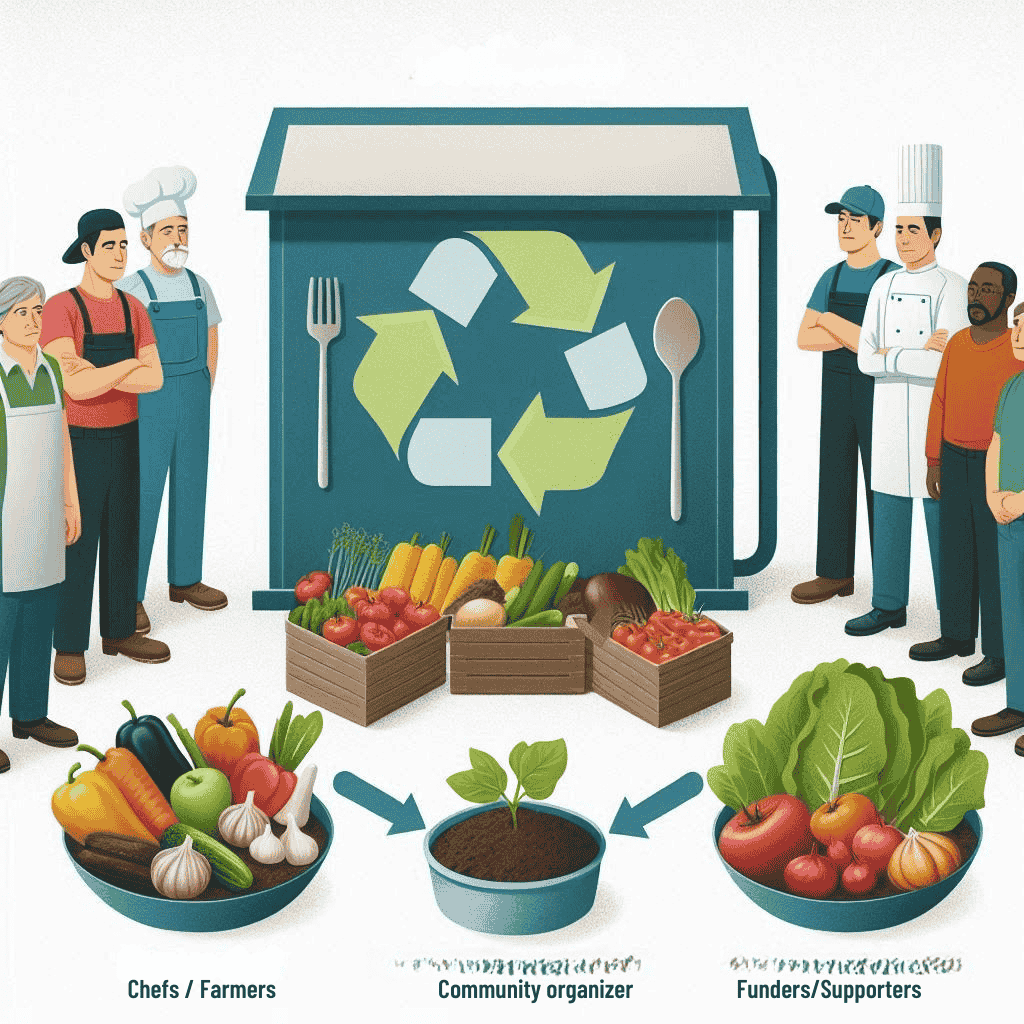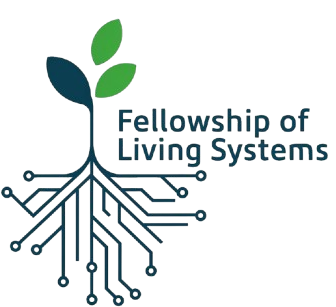By: Shannon J Dobbs
A new approach to food system transformation combines special operations tactics with community entrepreneurship to address climate change where traditional approaches have stalled

In the rugged mountains surrounding Fort Bragg, North Carolina in the 90s I once participated in Robin Sage – the notoriously demanding final exercise for Special Forces candidates – as a volunteer trainee. Years later, in the bustling nightlife of Reno, I helped build coalitions of unlikely partners to transform a downtown many had written off. Today, I’m applying those same strategies to what might be our most critical mission yet: transforming our food system to address climate change.
As global news sources increasingly center climate coverage as an editorial priority, we need to examine not just what solutions exist, but how we implement them at scale without falling into the administrative quagmire that dooms so many well-intentioned initiatives.
The Entrepreneurial Advantage: We Make the Rules
The fundamental difference between successful climate adaptation and bureaucratic failure lies in who makes the rules. Government agencies, large corporations, and even many non-profits inevitably hit the ceiling of their own administrative complexity. As organizations scale to “meet the need,” they tend to rise to their level of incompetence, creating systems that serve their own perpetuation rather than their stated mission.
Small businesses and community entrepreneurs operate differently. We make the rules. We adapt quickly. We stay close to the ground. Our connections are direct and lasting. We are our communities.
Small changes can equal big benefits using upstream approaches. By empowering communities to implement climate solutions directly – rather than growing organizations to “deliver services” to them – we create resilience that no top-down approach can match. Communities control what they use to adapt to changing climate dynamics, maximizing resource efficiency through living system designs that follow bio-regional flows.
The Upstream Opportunity We’re Missing
Climate advocates often focus on energy transition – an essential but politically challenging endeavor. Meanwhile, a massive opportunity lies right beneath our feet and in our waste streams.
Our food system contributes approximately 35% of global greenhouse gas emissions, much of it unnecessarily. In America alone, we generated 91.2 million tons of surplus food in 2023, most ending up in landfills. This waste generates methane – a greenhouse gas 25 times more potent than carbon dioxide – while simultaneously depleting soils that could be sequestering carbon.
The tragedy is that we already have proven technologies and approaches to address these issues. What’s missing is an implementation strategy that can work at scale without creating new bureaucracies.
Special Operations Thinking for Climate Action
In military special operations, we learned that direct frontal assaults rarely succeed against entrenched opposition. Instead, we built coalitions with local partners, identified upstream interventions with maximum impact, and created self-reinforcing systems of support.
This approach – what the military calls “force multiplication” – is precisely what our climate response needs.
The difference is that with climate change we’re not facing entrenched opposition, but instead unfocused effort and extreme distraction leading to global impotence. These are addressable barriers to achieving our goals.
Consider two technologies with enormous potential for climate impact:
First, industrial blast chillers – the same technology that empowered MGM Grand to rescue over 5 million meals from their own conventions and buffets in less than a decade – can be scaled down to neighborhood level for under $10,000, enabling communities to rescue prepared food that would otherwise go to waste.
Second, breakthrough technologies like HumiSoil can transform virtually any organic waste – from food scraps to agricultural residues to forest fire mitigation debris – into regenerative soil amendments through bacterial photosynthesis that works 24/7, literally growing water in soil while sequestering carbon.
The beauty of these technologies lies in their adaptability. They don’t require massive infrastructure or complex administration. They can be implemented by churches, community groups, small farms, and local businesses – with each implementation controlled by the community it serves.
Beyond Administration: Guidance Instead of Growth
Traditional approaches to scaling impact inevitably lead to administrative bloat. The Fellowship of Living Systems takes a fundamentally different approach – staying deliberately small while maximizing impact through guidance, advocacy, and mentorship.
This isn’t just an organizational strategy; it’s a personal necessity. As a disabled veteran, I need to maintain the flexibility that retirement allows. But it’s also a profound advantage for the communities we serve.
By focusing on equipping others rather than growing our own operations, we:
- Keep decision-making close to the ground where implementation happens
- Avoid the administrative complexity that strangles innovation
- Enable communities to adapt solutions to their specific needs
- Create resilience through distributed ownership rather than centralized control
The Mycelial Network: Living System Design
Nature doesn’t scale through administrative hierarchies. It scales through mycelial networks – interconnected systems where each node maintains its autonomy while benefiting from and contributing to the whole.
This living system design allows us to work across traditional boundaries. Because HumiSoil technology is equipment and AgTech dependent rather than flow dependent, we can literally hop over mountains to create on-site solutions anywhere – a game-changer for managing animal waste and fire mitigation debris.
When a dairy farm in California implements HumiSoil technology to transform manure into soil amendments, or a conservation trust in New York uses Humisoil treated brewery spent grain to restore degraded soil, they’re not following a rigid protocol from above. They’re adapting a proven approach to their specific context, with guidance rather than administration from experts positioned with game changing tools and strategies.
When a church in Colorado or a community soup kitchen in Puerto Vallarta installs a blast chiller to rescue prepared foods, they’re not becoming part of a bureaucracy. They’re taking direct action to address food waste in their community, supported by knowledge rather than controlled by hierarchy. Whether they redistribute that food or repackage it for grab-and-go resale is a decision made at the community level to balance needs with resource availability.
The Climate Action We Can Start Today
While policy changes remain important, this entrepreneurial, community-controlled approach allows immediate climate action without waiting for perfect political conditions.
The power lies in its adaptability. Communities can implement solutions at whatever scale makes sense for them – from backyard composting to municipal waste systems, from neighborhood food rescue to regional distribution networks.
Each implementation builds momentum for the next, creating what military strategists call a “cascading effect” that can transform systems more rapidly than conventional approaches predict. What opportunities open up when methane producing food waste and entire trees can be turned into water growing soil amendments in the Southwest US at scale? We know the result looks like in the UAE, and Malaysia, and 30+ other countries, let’s try Colorado and Texas and where I grew up in central New Mexico next.
Joining the Coalition
The climate crisis demands we move beyond either/or thinking to both/and approaches. We need energy transition and food system transformation. We need policy change and grassroots implementation. We need technological innovation and community ownership.
The Fellowship of Living Systems is building coalitions across these traditional divides, focusing on empowering communities to implement regenerative solutions at multiple scales without creating new bureaucracies.
Whether you’re a community leader seeking practical climate solutions, a farmer interested in regenerative approaches, a waste generator looking to create value from byproducts, or simply someone concerned about our climate future – there’s a place for you in this coalition.
Our communities already have the components needed for transformation – the waste streams, the underutilized spaces, the human ingenuity. What’s needed is a framework for implementation that aligns these components into regenerative systems while keeping control in local hands.
Drawing from special operations experience, nightclub marketing acumen, and deep food system knowledge, we can accelerate climate action through strategic upstream interventions – turning our greatest challenges into our most powerful solutions, all while ensuring communities make their own rules.
As global publications increasingly make the decision to elevate climate coverage, let’s ensure we’re highlighting not just the problems we face. Let’s also amplify the existing, proven entrepreneurial implementation pathways that allow communities to take immediate, meaningful action without creating new bureaucracies. The climate battle will be won not through administrative scaling, but through empowering communities to implement proven solutions on their own terms – a special operation for our shared future.
[Author bio: Shannon Dobbs is founder of Fellowship of Living Systems (Food System Hackers, PBC), a disabled Army veteran with special operations background, former nightclub owner, and systems innovator developing upstream interventions for climate resilience. Learn more at https://LivingSys.org]

